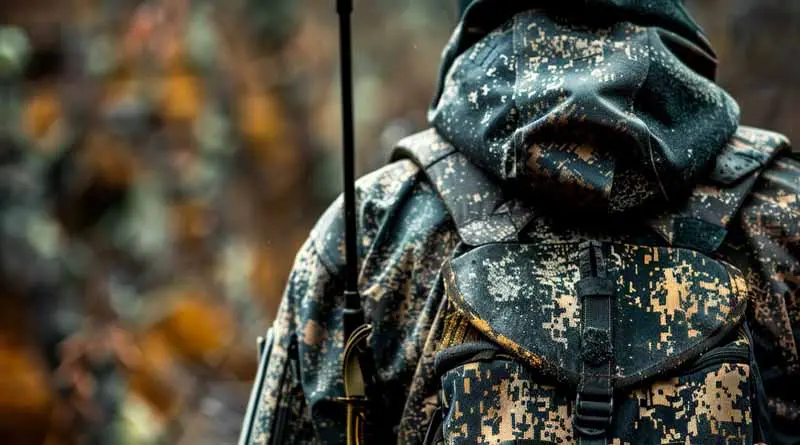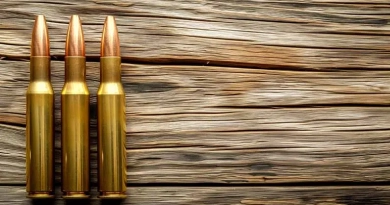
What Is The Best Way To Stay Camouflaged While Hunting?
The Art of Concealment: Mastering Camouflage in the Wild
In the hush of an early morning where the light brushes the leaves with gentle strokes and the world seems to hold its breath, a hunter understands the criticality of merging with the wilderness. The question at hand, vital to the success of any hunt, is: What is the best way to stay camouflaged while hunting?
Camouflage in hunting is not just about wearing a patterned outfit; it’s about deceiving the keen senses of the game. It’s an art—knowing how to dissolve into the natural environment, minimizing the visual, auditory, and even olfactory cues that could alert prey to human presence.
Deep Dive into Overcoming Camouflage Challenges in Hunting
In the realm of hunting, effective camouflage is pivotal, yet achieving it involves navigating a series of nuanced environmental and behavioral challenges. Each hunting terrain presents its own unique set of obstacles, demanding a tailored approach to concealment that respects both the landscape and the keen senses of the game.
Understanding Terrain-Specific Camouflage Needs
Visual Mismatch Challenges: The primary issue many hunters face is the visual mismatch between their camouflage and the environment. For instance, wearing camouflage with leaf patterns in an area with little to no dry brush can make a hunter stand out dramatically. This mismatch is not just a minor oversight; it can be the critical difference between a successful hunt and a day spent in fruitless pursuit.
- Forest Environments: Require deep green, heavily patterned camo that mimics the rich underbrush and tree patterns.
- Prairie and Open Brush: Better suited to lighter, tan or yellowish camo that blends with dry grass and sparse foliage.
- Winter Landscapes: Demand white or grey camo to match the snowy and icy conditions.
Addressing Noise and Movement
Noise Production: Noise is a significant factor that can betray a hunter’s presence to the game. The sounds of crunching leaves, snapping twigs, or rustling clothing are much louder in the quiet of a natural setting.
- Soft Fabrics: Opting for garments made from materials that minimize noise, such as fleece or soft cotton blends, can drastically reduce the chances of startling nearby animals.
- Controlled Movements: Learning to move slowly and deliberately is crucial. This means placing each foot carefully, watching for twigs, and avoiding sudden movements that could draw attention.
Mastering Scent Concealment
Scent Challenges: Animals, especially those like deer, are extraordinarily sensitive to scents. The human odor can alert prey from significant distances, making scent control a critical component of effective camouflage.
- Scent-Free Products: Hunters should use scent-free soaps, shampoos, and detergents to wash their clothing and bodies before a hunt.
- Cover Scents: Applying earth-scented sprays or even local foliage to gear can help mask human odors. Some hunters use scent blockers or neutralizers that eliminate or alter body odor scientifically.
Integrating 3D Camouflage Techniques
3D Camouflage: To break up the human outline more convincingly, 3D camouflage techniques, like wearing a ghillie suit, can be incredibly effective. These suits consist of strips or patches of fabric that mimic natural elements like leaves, twigs, and grass.
- Stationary Hunting: Ghillie suits are particularly effective for hunters who remain in one spot, such as in a blind or when hunting for game like turkey.
Utilizing Light and Shadow
Lighting and Silhouette: Understanding how light and shadow play across different terrains can greatly enhance a hunter’s ability to stay hidden.
- Use of Shadows: Staying under cover or in shadowed areas can help reduce the chances of being spotted. Hunters should be aware of how the sun’s position might cast shadows and use this to their advantage.
- Avoid Skylining: When moving along ridgelines or open skylines, hunters must ensure they do not outline themselves against the light, which can make them easily visible even from great distances.
Conclusion: The Confluence of Art and Science in Hunting Camouflage
Refining the art of camouflage is both a science and a craft that requires attention to detail, patience, and respect for the natural world. By choosing the right camouflage for the environment, minimizing noise and scent, employing advanced 3D camouflaging techniques, and tactically using light and shadows, hunters can significantly improve their stealth and effectiveness. This strategic approach not only increases the chances of a successful hunt but also enhances the ethical pursuit of wildlife, ensuring hunters harmoniously blend into the ecosystems they cherish.
Tools and Resources for Implementation
To implement these strategies effectively, consider the following tools:
- Region-Specific Camouflage Clothing: Outfits designed for particular landscapes.
- Noise Reduction Gear: Soft gear and noise dampeners for equipment.
- Scent Elimination Kits: Sprays and washes specifically made for hunters.
- Ghillie Suit: For advanced concealment.
- Camouflage Tutorials: Many online resources and local workshops can teach visual blending techniques.
Mastering camouflage is an ethical obligation as much as a tactical advantage. It respects the game by leveling the playing field, allowing hunters to make clean, efficient kills that minimize suffering. The pursuit of invisibility in the wild teaches us not just about being unseen but about the deep respect and understanding of the natural world required to walk quietly within it. This journey, filled with the mastery of craft and the appreciation of nature, is what makes hunting a profound endeavor, echoing the silent stories of the woods and the unspoken tales of the chase.






